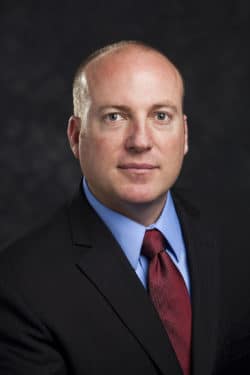By Scott Wiater, president and CEO, Standard Solar

With each passing day, the Federal Energy Regulatory Commission creeps closer to implementing President Donald J. Trump’s bailout plan for economically challenged coal and nuclear plants.
Some estimates put the bailout cost at around $34 billion of taxpayer money to prop up electricity-generation plants that can’t survive on their own. The argument is that these coal and nuclear plants are necessary to provide “baseload power” in case of a natural disaster, computer problems (like hacking our electrical grid) or some other interruption in the normal flow of electricity.
Unfortunately, this strategy picks the losers in the free market battle for the hearts and minds of electricity consumers and tries desperately to turn them into winners. It is a losing battle.
After all, solar power is already the lowest cost electricity-generation form in countless states across the country, with more coming on board each day. And when you augment solar with energy storage, the story becomes even more overwhelmingly on the side of renewable energy like solar.
In addition, distributed generation technologies like solar help stabilize the grid, shaving peak demand and relieving transmission strain on the connecting wires, lowering the costs of repairs for utilities. And distributed generation—in contrast with centralized generation structures like coal and nuclear—make it much more difficult for our enemies to disrupt the grid through hacking or other more conventional disruption strategies.
Finally, the idea that solar customers don’t pay their fair share toward grid upkeep is, quite simply, a lie. Through the benefits they provide for the grid, the money they save utilities and other ratepayers far outweigh what they might save in transmission costs because they are generating their own power on site.
Don’t take my word for it—the Lawrence Berkeley National Laboratory has studied the question of what utilities call the “cost shift” and have found that the “cost shift” only occurs once a state generates 10% or more of their power from solar energy. You want to know how many states to whom that currently applies? Three (Hawaii, California and Nevada).
The bottom line is this: If we bail out failing nuclear and coal facilities, we are not only not saving coal jobs (which is the real motivation behind this move), but we’re setting back the inevitable transition of the United States away from fossil fuels and on to the much cleaner alternatives of solar and wind. And we’re interfering in the free market to pick winners and losers—and choosing the wrong side to boot.
The views and opinions expressed in this article are the author’s own, and do not necessarily reflect those held by pv magazine.
This content is protected by copyright and may not be reused. If you want to cooperate with us and would like to reuse some of our content, please contact: editors@pv-magazine.com.







By submitting this form you agree to pv magazine using your data for the purposes of publishing your comment.
Your personal data will only be disclosed or otherwise transmitted to third parties for the purposes of spam filtering or if this is necessary for technical maintenance of the website. Any other transfer to third parties will not take place unless this is justified on the basis of applicable data protection regulations or if pv magazine is legally obliged to do so.
You may revoke this consent at any time with effect for the future, in which case your personal data will be deleted immediately. Otherwise, your data will be deleted if pv magazine has processed your request or the purpose of data storage is fulfilled.
Further information on data privacy can be found in our Data Protection Policy.